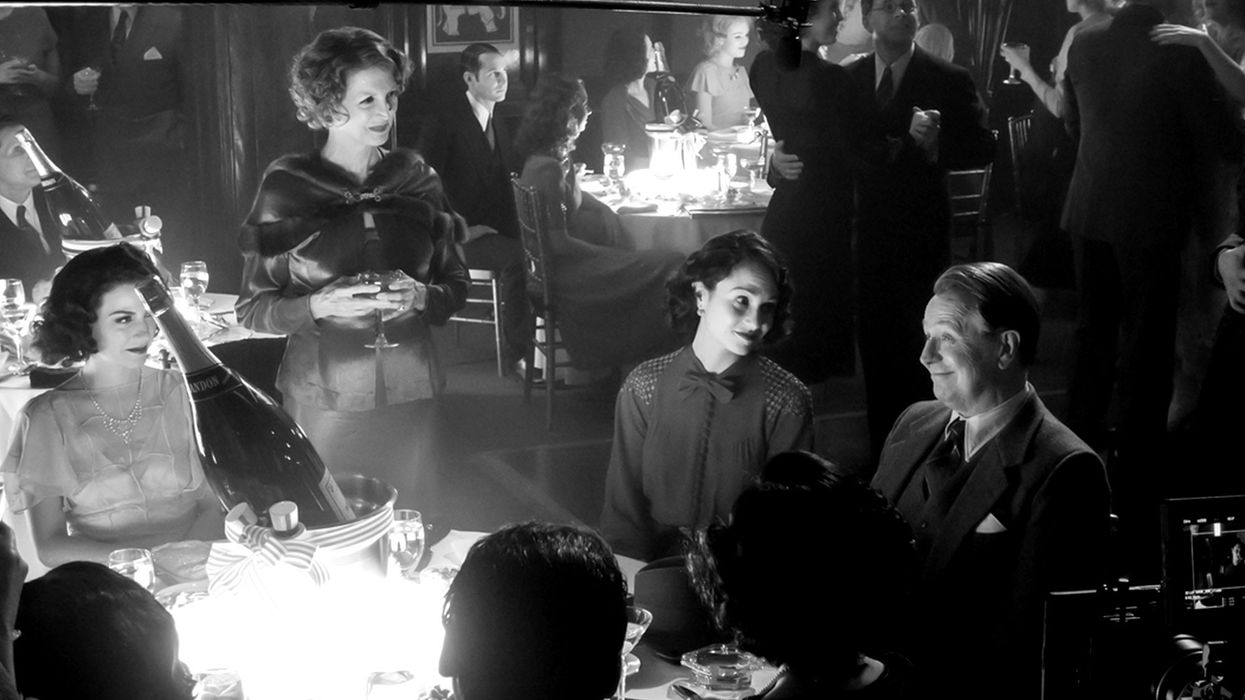Which Parts of 'Mank' Are Real and Which Are Digital FX?
Mank is the movie we're all talking about. But how did Fincher make it feel so real?

David Fincher's Mank captures the look, feel, and authenticity of a 1930s movie, but it was made in 2020, shot digitally, and uses a ton of VFX to sell the world. Fincher has been augmenting visuals with new backgrounds and effects since he started out.
Most of the time they're so subtle it's hard to tell. Lucky for us, the companies helping him created a breakdown.
Check out this video from Artemple Hollywood, and let's talk after.
What Parts of Mank Are Real and What Are Digital?
Fincher is famous for being a perfectionist, and most of the digital work in his movies is there to make things just slightly better. They call this "body and fender work" in post. Sometimes that means taking out a light in a reflection or just adding water to the kick from a starlet's heels.
These visual effects shots were overseen by Fincher alongside co-producer Peter Mavromates and the film’s art department. Fincher and Mavromates coordinated four VFX supervisors at different studios: Artemple (Wei Zheng), Territory Studio (Simon Carr), Savage (James Pastorius), and ILM (Pablo Helman).
Check out how they just added clouds to this one scene.


These shots are never altered just for the sake of altering them.
Mavromates told Before and Afters, "David never wants to compromise how you would shoot something for the sake of an effect. So he goes out and he shoots it like he expects to shoot it and imagines whatever’s supposed to be missing will fit in there. I don’t think we’ve talked about a lock-off in 25 years, you know? He certainly didn’t make any compromises in how he shot at those three sequences. It’s like there’s monkeys, elephants, giraffes, but he kept in mind what he wanted to do there. And really, the biggest one is the monkeys because the monkey cage was not there. So ILM added that Victorian-styled monkey cage and the monkeys. And then with the elephants, they modified the field a little bit and added the fencing that separates the actors from the elephants, and then added the elephants in. The giraffe—they just added the giraffe and some shrubbery that the giraffes are chewing on."


Doing this movie in black and white actually added some hurdles to the VFX. The artists had to rotoscope and track visual artifacts to cut them out. Glares became more apparent, and there was some work to be done with shadows as well.
There was also the worry that the movie would lack contrast, or turn out gray.
DP Erik Messerschmidt worked with Fincher to make sure each set up made sense for the way the film would look at the end. When they ran into situations like an actor's wardrobe blending into the walls or carpet, they did roto work to make each pop a different shade.
This is all done intricately and on a case-by-case basis. You can see every example in the video at the start of the article.
Did you notice any effects in Mank, or did they blend seamlessly for you? Let us know in the comments.
Source: Befores and Afters











